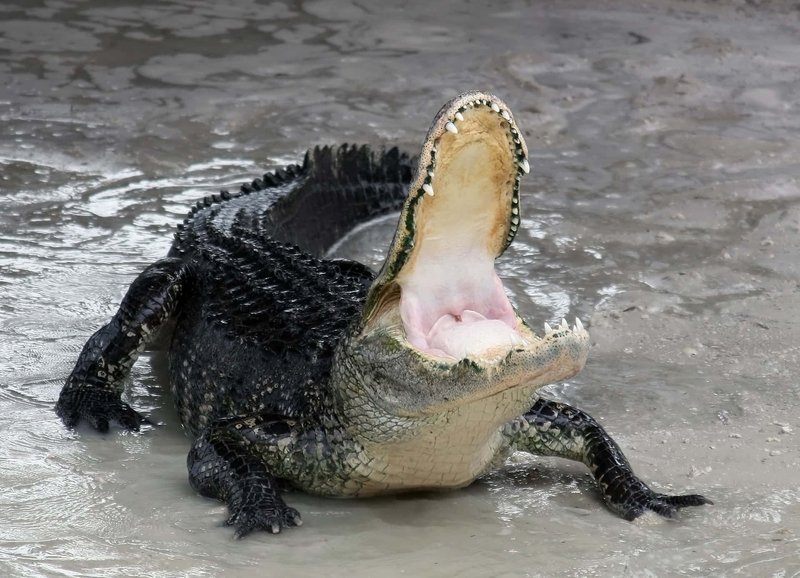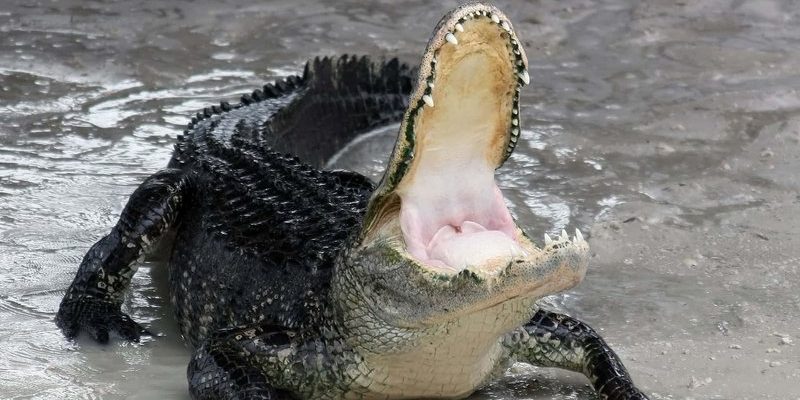
In their natural habitats—primarily wetlands, swamps, and rivers—alligator actions help create and sustain a rich biodiversity. Picture a large beast that, while seemingly lazy, is actually a keystone species, meaning their presence significantly impacts many other animals and plants around them. Let’s dive into how alligators interact with their environment and why they are essential to the ecosystems they inhabit.
Understanding Alligator Habitats
Alligators thrive in warm, freshwater environments, mainly in the southeastern United States and parts of China. They prefer areas with plenty of vegetation, which provide cover and nesting sites. Think of swamps and slow-moving rivers where birds sing and fish dart about. This type of habitat supports a whole community of life, and alligators are right at the center of it.
You might be surprised to learn that alligators can alter their surroundings. For instance, by digging holes in the mud, they create ponds that can hold water during dry spells. This not only benefits them but also provides a vital resource for other animals. These small water bodies can become temporary homes for frogs, turtles, and various fish, essentially acting as mini-ecosystems.
Another neat aspect is their role in controlling fish populations. By hunting certain species, they help maintain balance in the aquatic food chain. If one fish species becomes too populous, it can lead to overgrazing on aquatic plants, disrupting the entire habitat. Alligators help keep these populations in check, ensuring a healthy ecosystem.
Alligator Behavior and Diet
You might wonder what alligators eat and how that shapes their environment. These reptiles are primarily carnivores, feasting on fish, birds, and even small mammals. Their strong jaws make them effective hunters, but they also play a larger role. As opportunistic feeders, alligators can consume whatever is available, including carcasses. This scavenging helps clean up their habitat, reducing waste and promoting a healthier environment.
Alligators are also known to engage in a behavior called “basking.” While they’re often portrayed as lazy, basking is a crucial activity. By sunbathing, they regulate their body temperature, which is essential for their health. But here’s the thing: this behavior also creates opportunities for other animals. Birds might perch on a basking alligator, catching a break from the water—an example of how different species can interact in a shared habitat.
Interestingly, alligator young have their own role. Hatchlings are often preyed upon, but they also contribute to their environment by stimulating plant growth. Their movements through the water and marsh areas help aerate the soil and disperse seeds, promoting plant diversity. So, it’s not just the adults at work; the kids are making an impact too!
Keystone Species: Why Alligators Matter
Let’s talk about why alligators are considered keystone species. A keystone species is one that has a disproportionately large effect on its environment. In the case of alligators, their presence helps maintain the structure of their ecosystem. Without them, many species could struggle to survive, leading to a significant shift in the habitat.
By hunting, alligators help keep the populations of various prey species in balance. This balance is crucial for other animals that share the same habitat. For example, without alligators, an overabundance of fish could lead to a decline in aquatic plants. This decline might affect birds and other animals that rely on those plants for food and shelter. Essentially, it’s a domino effect.
Moreover, alligators create essential habitats for numerous species through their nesting activities. When female alligators build nests, they often create mounds from mud and vegetation. These mounds can become key nesting sites for birds and other small mammals. So, every time an alligator lays eggs, it’s not just about producing the next generation—it’s about fostering diversity.
Alligators and Climate Change
Climate change is a pressing issue affecting all ecosystems, and alligator habitats are no exception. Rising temperatures and altered rainfall patterns can threaten the delicate balance in wetlands. Alligators, being ectothermic creatures, are sensitive to temperature changes. Hotter weather can lead them to move to cooler areas, impacting their hunting and breeding patterns.
Increased flooding can also threaten nesting sites. If floods occur during the egg-laying season, many hatchlings may not survive. This can reduce alligator populations, which in turn affects the entire ecosystem. Here’s the thing: alligator populations are an indicator of ecological health. When they thrive, it usually means that the habitat is in good shape.
Conversely, a drop in alligator numbers may signal trouble for the ecosystem. Conservation efforts are crucial to ensure these creatures can adapt to changing conditions. Protecting their habitats and understanding their role can help preserve the delicate balance of these habitats.
Conservation and Protection Efforts
Given their essential role, various conservation efforts are underway to protect alligator populations and their habitats. Many regions have designated alligator reserves and parks, allowing these reptiles to thrive while fostering biodiversity in surrounding areas. You might be surprised to learn how many organizations focus on educating the public about the importance of alligators.
Public awareness plays a crucial role in conservation. By understanding alligators’ ecological roles, people can appreciate their value beyond just the fearsome reputation. Educating communities helps reduce human-wildlife conflicts, as people learn to coexist with these fascinating creatures.
Furthermore, responsible practices in water management and land development can go a long way. When decisions are made to protect wetlands, it benefits countless species, not just alligators. Sustainable practices ensure that these ecosystems remain vibrant and functioning, which, in turn, supports all life that depends on them.
In summary, alligators play a vital role in their natural habitats. From regulating prey populations to creating environments for other species, their impact runs deep. Understanding the importance of these mighty reptiles helps us appreciate the delicate balance of nature.
As we face challenges like climate change and habitat destruction, the role of alligators becomes even more critical. By protecting them, we safeguard the intricate web of life that thrives in their presence. So, the next time you think of an alligator, remember they are more than just a fearsome creature; they are a keystone species—guardians of a thriving ecosystem.

